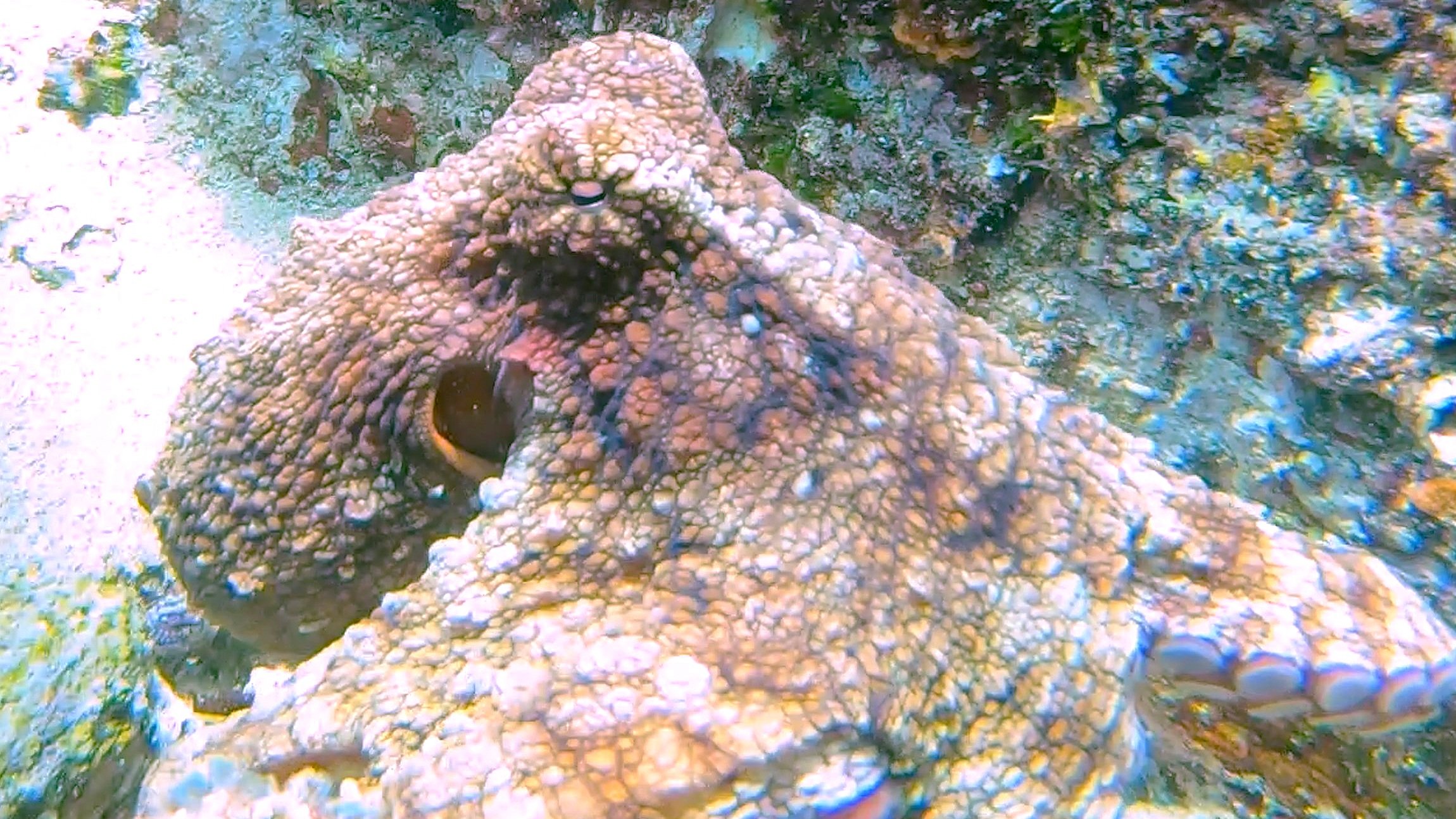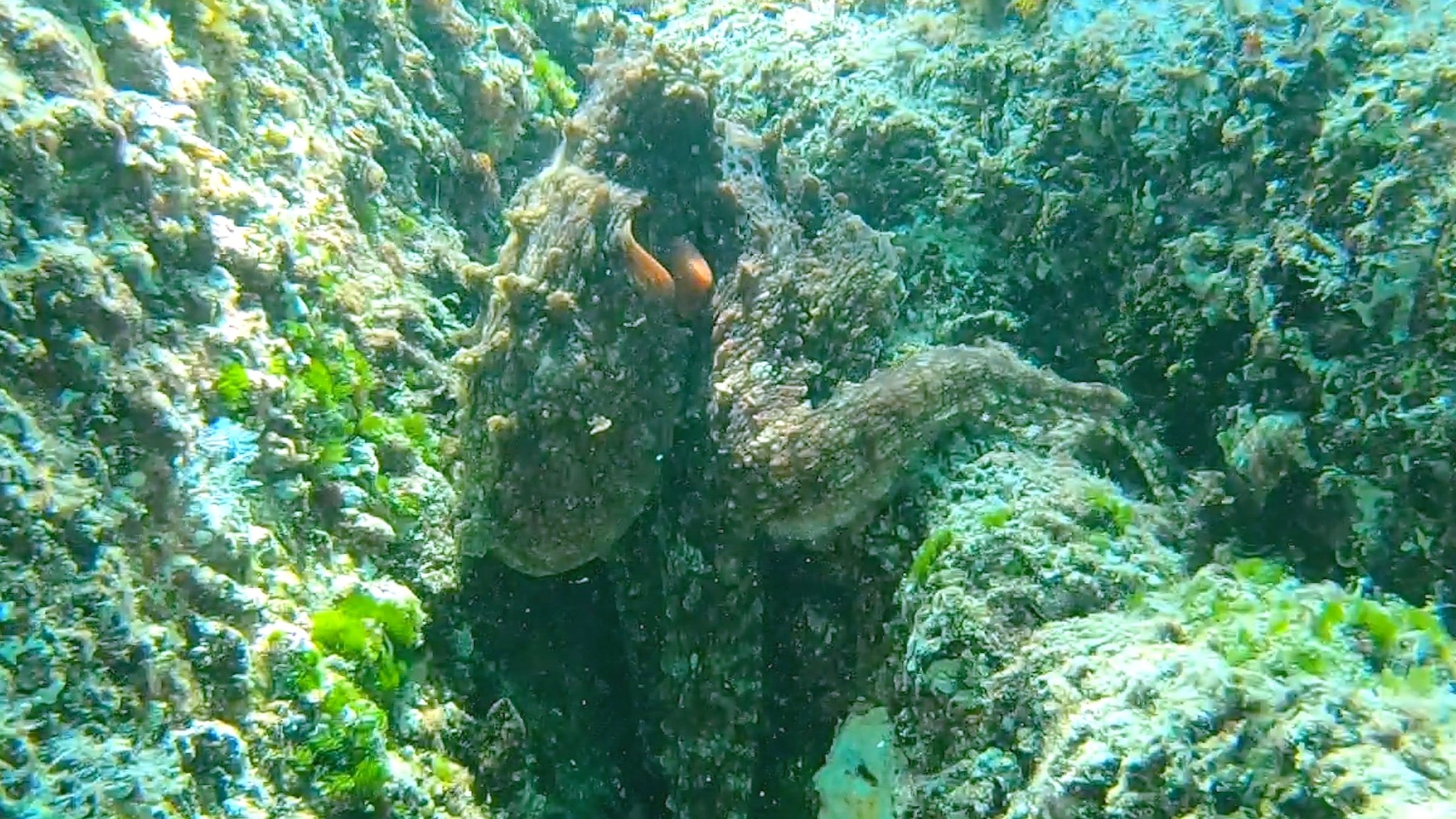Freediving Cabos San Lucas, Playa Coral Negro to El Balconcito
Cabo San Lucas, Mexico by Andre Navarro
Famous Cabo San Lucas, Mexico ! To me, is a land of extremes. Extreme heat, extreme desert, extremely touristy and the ocean life extremely beautiful and awesome. This is one of the few places that I love exploring underwater, yet do not look forward going to. In fact, I dread this place until I get there. I’m not a fan of the heat and I don’t enjoy walking around or to the beach. I almost got heat stroke one time just walking from our AirBnB to this location, which was only about 2.5 miles away. But in the 100 F intense sun while sweating profusely, I dehydrated fast and was not properly prepared with enough water. Now, when diving here, I make sure I’m well hydrated the night before and day of. I cover up good to stay out of the sun, walk in the shade and Uber to dive sites whenever possible. I also add electrolytes to my water to keep well hydrated, mentally focused and feeling strong.
Once you accept the heat and are properly prepared for it, the fun begins ! Two of my favorite areas brimming with ocean life are right next to each other. Playa Coral Negro and Playa El Balconcito, which are also known as Playa Empacadora and recently officially changed to Playa El Corsario. In English, many refer to this as Cannery Beach and collectively as Land’s End. This can be really confusing, especially if you are not familiar with the area. Playa Empacadora, Playa El Corsario and Cannery Beach refer to the long sandy beach in between the Cabo San Lucas Harbor entrance and the beginning of the cliffs at Land’s End. Behind the beach, is the old packing/cannery plant that lays in ruins of which the beach was first named after. Also, right where the cliffs begin at Land’s End, is where Playa Coral Negro is located. And right around the corner of the that large islanded reef is Playa El Balconcito, two very small beach areas divided and isolated by the cliffs.
Cabo San Lucas, Land's End by Andre Navarro
This area is fantastic for freediving and snorkeling, yet passed and overlooked every day on the way to Pelican Rocks, where the snorkeling tour boats take all the visitors. Pelican Rocks has a roped off boundary to keep the boats out of the water exploration area. This is a good thing as there are so many boats zipping around constantly and they come right up to shore and along the shallow reefs. This is a major concern with exploring around Playa El Balconcito which is constanlty swamped with boats making it dangerous at times. Playa Coral Negro is close to shore and boat free.
Playa Coral Negro gets it’s name from the dark purple/black corals that are all over the shallow reefs. The thing that makes Playa Coral Negro awesome is a small area of discarded ship parts near shore that have turned into a fish haven. Only about 30 feet from shore in about 5’ of water, this man made reef is lively with puffers, porcupinefish, boxfish, eels along with so many other diverse and colorful fish. Most people are not aware of this area nore pay any attention to it. This is always our first stop on the way to Pelican Rock. But there is so much to see, we end up forcing ourselves to leave or we would spend too much time here.
Playa Coral Negro Reef by Andre Navarro
Playa Coral Negro Reef by Andre Navarro
The first thing you’ll notice are all the Longspine Porcupinefish busy swimming around. From babies to extremely large ones. Even though they are extremely poisonous, they are peaceful, non aggressive and curious. They are fun to observe as they will swim up to you and observe you closely. I love their big round eyes which reflect like bright blue gems. You’ll find bunches of them swimming around in a swarm. Usually nearby or mixed in with them, you’ll find Guineafowl Pufferfish. Guineafowl Pufferfish come in 3 variations, black with white spots which is the most common, yellow with black spots which are rare and a combination of the two which are extremely rare. Guineafowl Puffers can inflate themselves with water in self defense, just like Porcupinefish, but Guineafowls do not have poisonous spines. The Guineafowl Puffers are also more shy and harder to get on camera as they usually swim away when approached.
There’s always a huge variety of cool and colorfish here. You’ll find many fiesty Sergeant Majorfish with their yellow and silver bodies with vertical black stripes. They’ll swim up to you and follow you around as they are not afraid. They are extremely territorial with other fish, constantly chasing them away and out of their nooks. Another cool fish always nearby is the Mexican Hogfish, with it’s huge canine teeth and beautiful green eyes. These fish are very colorful with yellow tails and multi colored stripes and spots.
Guineafowl Puffer and Longspine Porcupinefish by Andre Navarro
Sergeant Majorfish by Andre Navarro
Mexican Hogfish by Andre Navarro
After hanging out with all these diverse fish, we moved on to the next location on the way to Pelican Rocks, Playa El Balconcito. This area has many shallow reefs filled with thriving fish, corals and beautiful underwater views. Playa El Balconcito starts right around the corner from Playa Coral Negro, and the entire area to and beyond it is filled with beautiful marine life. Close to shore, below the towering cliffs is very shallow. But about 25 feet from shore, there is a steep drop off. The majority of fish hangout near shore along the shallow reefs. Often hundreds of fish all at once. At the same time, there are often schools of hundreds of fish that cruise the drop off opposite from shore.
Depending on the time of year, you’ll find many Bullseye Round Stingrays in the area. Sometimes so many, they pile up in the corners of the shallow reefs. Bullseye Round Stingrays have a venomous spine in their tail they use for self defense if stepped on. However, if not attacked or provoked, they are very calm and nonaggressive. They quickly bury themselves with just their eyes sticking up above the sand. And they have very cool mysterious looking eyes that remind me of a cat’s.
Guineafowl Puffer in shallow reefs by Andre Navarro
School of fish over drop off by Andre Navarro
Bullseye Round Stingrays by Andre Navarro
Also very common to this area are Octopuses. Lot’s of them. I love to observe them while they observe me back. First you have to gain their trust by not swimming directly to them which looks like an attack. Also stay very calm in the water with minimal movement, espeically no splashing while diving down or with fins. Let the Octopus see you being calm and nonaggressive and you will spark their interest. Then it’s time to go in for a closer look, slowly and from the side. If you can remember these simple techniques of not scaring away octopuses you come across, you’ll be amazed at what comes next.
I came across a very curious Common Octopus sticking out of it’s reef nook. When I realized it was an octopus, I was already very close to it and it had already been watching me. It had already made the decision to stick around and check me out or it would have retreated back into it’s nook and closed the door of rocks and shells it had gathered. When you observe an octopus close up, you can feel their intelligence. Everything it does is calculated. And once they decide to make contact, it’s an awesome experience. The Common Octopus we came across decided to come out of it’s nook and go for a walk around the reef and after, back to it’s nook. I followed close behind trying to get as many different angle shots without makeing it nervous. This octopus wasn’t the least bit scared of me. The moment it came out of it’s nook, it began changing colors, textures and surface shapes to mimic the reef. It was an amazing show of camouflauge and octopus abilities.
Common Octopus by Andre Navarro
Common Octopus camouflage by Andre Navarro
Common Octopus changing shape by Andre Navarro
A few more of my favorite fish, abundant in this area are Yellowtail Surgeoun, Spotfit Porcupinefish and Spotted Boxfish. Yellowtail Surgeonfish are fun to swim with, especially when they’re feeding off the reefs as they don’t care who joins them. Usually they travel in large groups with their large oval spotted body and bright yellow fins. The only difficult thing is they rarely stop moving, exploring around quickly and unpredictably making them hard to keep up with. Spotfin Porcupinefish like Longspine Porcupinefish have spines that stick out when they inflated themselves with water as self defense. When not threatened or harrassed, they are calm and nonaggressive. Spotfins are long and flat shaped unlike Longspines which are shaped like footballs. And last, Spotted Boxfish which look like little space aliens. They are shaped boxy with dots and small stripes. They are usually black with white dots and stripes or blue and yellow dots. Boxfish are very robust and don’t mind being joined in a swim. Usually after being followed for a bit, they’ll turn around and face you as if wondering what one wants.
Yellowtail Surgeonfish by Andre Navarro
Spotfin Porcupinefish by Andre Navarro
Spotted Boxfish by Andre Navarro
The reefs of Playa Coral Negro and Playa El Balconcito are so fun to explore. And the exciting thing is, these are our first stops on the way to even more awesome area to explore, Pelican Rocks. We plan our time to spend at these first stops before moving on the the all day location.
The accompanying Youtube videos are first hand footage captured by Andre Navarro while freedive exploring Playa Coral Negro and Playa El Balconcito of Cabo San Lucas, Mexico. You can also view hundreds of beautiful photos of the awesome ocean life and underwater environments of Cabo San Lucas in the Photos section, Images of Cabo San Lucas, MexicoPublished by: Andre Navarro of Ocean Earth Green
I’m Andre Navarro, Southern California freediver and underwater videographer. I create ocean life adventure videos to connect viewers to our amazing underwater world to motivate stronger conservation and ocean life awareness. You can follow my ocean adventures here at OceanEarthGreen.com and view all my current and past videos at Youtube.com/OceanEarthGreen.















